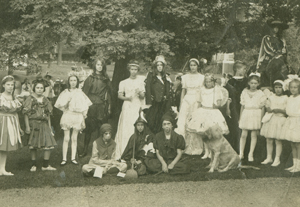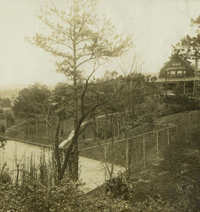
Historic Montford
Though it still remains unclear the exact origin of the name, Montford became firmly established in the modern record in 1893, when a small area approximately one mile north of Battery Park Hill was incorporated. This was a tiny community of about 50 people, mainly local businessman.
In 1905 the village of Montford was annexed to the city, and though a few structures survived from the original village, Montford lost its autonomous identity. Today, Montford is bounded by U.S. Routes 19/23, I-240, and Broadway.
The neighborhood we know today began as a dream of a development group called the Asheville Loan, Construction, and Improvement Company, chartered in 1889. The firm purchased and subdivided tracts of undeveloped land north of the Battery Park and sold lots. The enterprise languished until it was taken over by George Willis Pack, a lumber tycoon from the midwest who moved to Asheville in 1885. He is best know today as a philanthropist and benefactor of the town’s library and principal public square; he also donated land for Montford Park on the north end of Montford Avenue.
The people who bought lots and built in the Montford area in its building prime were for the most part middle class individuals who carried out the day-to-day activities of the city–businessman, lawyers, doctors, and a few architects.
Several residents found immortality in Thomas Wolfe’s autobiographical Look Homeward Angel.
Early city directories indicate that along with professionals, there were working class citizens and Montford has been home to African-American citizens as well as whites.
Though predominantly single family homes, land use in Montford has been mixed since the earliest days of development. The old Highland Hospital, located off the northern end of Montford Avenue, was the scene of a deadly fire in 1948, among the victims was Zelda Fitzgerald, wife of F. Scott Fitzgerald.
Just off Pearson Drive is Riverside Cemetery which is the final resting spot for some of Asheville’s most prominent citizens, including Thomas Wolfe, O Henry (William Sydney Porter), governors of North Carolina, Zebulon Vance (Civil War) and Locke Craig.
In 1977, much of the Montford neighborhood was designated as a Historic District and listed in the National Register of Historic Places. Additionally, the Asheville City Council in 1981 designated the Montford Historic District a local historic district as well. Additional information about the Historic Resources Commission and the Montford guidelines can be found on the Asheville City webpage link.

